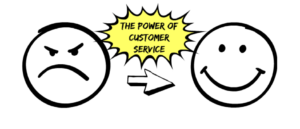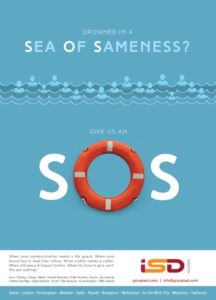Is Marketing having a Listening Problem?
Yes, you heard that right. Marketing has a listening problem…definitely looks like- but the problem isn’t a matter of not hearing the voice of the customer. The problem is understanding what all the noise actually means.
An unintentional tone-deafness has led marketers to realise that they are not just struggling to aggregate the right data or struggling to identify the moments of opportunity to deliver exceptional experiences to their customers. Marketers admit that the biggest challenge the organisation faces while working to develop lasting customer relationships is actually remembering the relationship itself and not solely focusing on getting campaigns out the door.
Organisations have settled for passive hearing instead of active listening.
When it comes to aggregating the true voice of the customer, many marketers continue to rely on passive channels bringing in reactionary signals intentionally sent to the organisation. This leaves little opportunity to aggregate, let alone understand, real-time behaviours and cues being left behind by the customer across the omni-channel landscape. Consider where marketers believe insights, cues and indicators are being left: Email, Social, Sales Rep Interactions, Forms, Service & Support. While this list seems reasonable and an appropriate collection of customer signal sources, when sorted into categories of active, realtime, customer-driven signals versus post-engagement, reactionary or company-controlled environments, the picture of where marketers listen for signals begins to point to channels of known, structured comfort.
Where do customers actually leave cues?
Not in the known, structured comfort but in places like Social Media, User Generated Content, IoT Sensors, Chatbot sessions, Mobile Device detection etc
Data doubts are holding back advancement of the omni-channel experience.
Without question, marketing has spent the past decade (or more) actively investing in expanding the omni-channel toolkit, identifying new ways to reach and engage with the connected customer. Each experience advancement heightens the need for actionable insights and a clear signal based on customer voice and data. But few marketers feel they are able to unlock the opportunity in the channels and the data already in use. This doubt is contributing to a hesitancy to expand and further explore what is new in omni-channel engagement.
Getting small could get us back to the customer.
The criticality of small data sits with the insights that reveal the “why” – why is the customer here today, why are they searching, why are the buying, why are they NOT buying?
Marketers are waiting for complaints or opportunities to improve experiences through answering issues or questions rather than leveraging more complex data to proactively meet the customer with experiences that add value and delight. But marketers are also looking to get a better view of what the customer actually wants. Marketers need to understand the “why.”
Are they most prepared to take advantage of small data to turn noise into signals from the customer. Marketers are also confident they will finally reach the “why” behind customer’s actions and behaviours.
“Why” is also fuelling the marketer’s aspirations. When you try to identify brands across any industry that customers admired for their ability to deliver on real-time, personalised customer engagements, some key brands consistently rose to the top: Amazon, Apple, Google, Starbucks and Nike.
What these brands also do well is connect with people and engage with customers like individuals, not just transact with campaigns.The biggest differentiator of these leading brands is their ability to treat every individual like a friend or confidante.The ability to initiate conversations in a manner that reflects the customers needs helps differentiate the brand. In essence, these brands never loose sight of the fact that their customers are core to their business…and that their customers are people first, buyers second.
It is time for marketing to lead the charge to treat people like people. It is time for marketing to champion being human. It sounds fundamental…that our customers are people. But as we have already seen, marketers admit that remembering that the organisation is engaging with people and not just data sets or individual records can be challenging.
The tools and technology are available. The data is abundant. The missing piece has been the voice of the customer. It is time for Marketing to champion the shift back to human…driving profit and opportunity along the way.
ENDS
www.groupisd.com/story
www.brandknewmag.com


